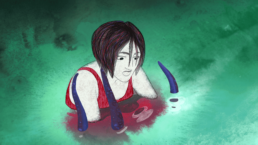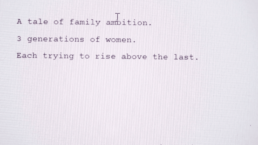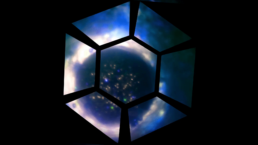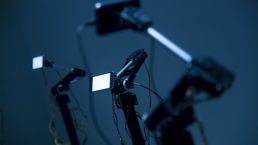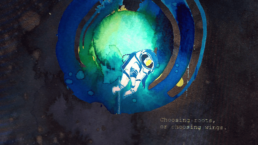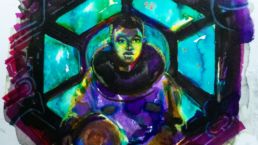Stephanie Cadoret
Lausanne, CH
Animation filmmaker, animation-oriented performer, animation teacher at the EESI in Angoulême and at the Ceruleum school in Lausanne, researcher in the history of cinema on the ways in which creators appear in their processes animation.

Biography
Stéphanie Cadoret (born in 1981, Meaux, France) graduated in new media and animation from ESAD Strasbourg (now HEAR), EESI Angoulême and Poitiers, and EMCA. She explores moving images as a director, audiovisual performer and academic researcher. She experiments with traditional drawing techniques and digital media, cinematic dramaturgy and new narratives. His films tell stories of interpersonal relationship difficulties and use poetic visual metaphors to express the inner states of the characters. As part of the Live Animated Orchestra collective, she produces live animation shows with musicians, where the animation loop is produced in parallel with its projection.
Stephanie Cadoret's answers
My name is Stéphanie Cadoret, I am an animated film director. I also do live animation performance and I teach moving images, notably at EESI and then I teach animation, animating frame by frame at Ceruléum in Switzerland, in Lausanne. And I am also a researcher in the history of cinema and I work on the modalities of the appearance of the animator alongside his animation.
So, it seems to me that we are living through a fairly major period of hybridization in the field of animated films. We are now talking about Expanded Animation or forms of animation that go beyond the cinematographic device and which in this case imply a reflection on the device. And then there is also a diversification of uses, interactive forms that are being put in place, which requires animation and, as a result, specific approaches to animation. And it seems to me that a transversal reflection between the production of the animation and then the intentions of specific devices, that would make sense in the contemporary era.
So, I would say that a fundamental element would be the ability of students to produce prototypes. That is to say, test an object, draw conclusions, take it further. So that, I think, is a form of research and development and therefore to have an almost design approach with a prototyping phase. And the other aspect that seems quite important to me is the question of intentions and the ability to state intentions, whether technical or practical intentions, but also intentions of meaning, device, space or relations to places, to the public as well. I would tend to think that these would be the two somewhat necessary axes: prototyping and awareness of intentions.
It seems to me that one of the great difficulties of these emerging mediums is the complexity, in fact, it requires an extremely wide range of skills and probably difficult to achieve as an individual. So, in my opinion, this implies a skill in teamwork. Perhaps in addition with issues of the type, being a co-author with all the problems that poses, therefore human skills, suddenly on the one hand, of negotiation and on the other, of ensuring that the project does not not fade, by dint of consensus. And so, in fact, probably keep an ability to identify strong ideas, and things that may be transgressive or new, and manage to keep them alive in the project despite the multiplication of interlocutors.
I think probably a culture both of what is being done now and probably a culture of art history, or at least of the 20th century, in any case a form of media knowledge.
And maybe taste too. Anyway, some form of image work, with really just basic issues, composition, color, lighting and probably with a top layer that would be to capture where the audience’s attention is on complex devices, for example, what to look at and where the attention is and also, perhaps the influence of the medium on the environment or the medium on the environment. So yes, we are even almost in the skills of architecture or collective scenography. This is probably the most basic.
And then, the general culture.
There would perhaps be two or three main axes, a more event-related axis in which we could also include everything related to installation, perhaps which would come under “expography” or contemporary art, a little in situ objects that may also be able to even animate spaces, for example, augmented reality in museums, things like that, that involve animation and design, possibly of characters, creatures or whatever .
And on the other side, it seems to me that video games and interactive objects, on various media and which involve user interactivity. There, I think so, there would be a bit of these two main axes to be involved. But it’s quite varied, because there is also everything that, like books with augmented reality, is developed elsewhere.
Now more and more people own 360 helmets. Suddenly, it becomes a space to consider films in 360. It’s still quite rich for the anime. At the moment, it’s very, very rich and very, very varied. It is true that there are not yet many platforms. In fact, the students learn animation cinema or they are in art school. And they may have less input in animation techniques, whereas in practice there are really things that happen in terms of transversality and which involve skills on both sides.
These new approaches to image processing, in particular with tools that are more of a neural network and that change the pipeline a bit in terms of colorization compositing. I’m not sure that it has really penetrated the industry yet, on the other hand the students seize these tools and use them, and so that all the same in the medium term, it risks upsetting a lot of things, everything that happens with the fact of applying a certain artistic direction to another image and in particular to a drawing. There, it is becoming really convincing. And so there, in the medium term, there are probably things that will happen on that side. The fact that there are a lot of indies, video games that involve a specific look, a specific aspect, it also feeds a lot from the animation, from the creative animators, from the anime side.
Perhaps the uses, indeed, the 360°. In fact, all the issues, the fact that social networks like Instagram favor more “Reals” (short videos editor’s note.), more videos. The content of moving images is multiplying and this creates experimentation grounds for people who produce animated and therefore graphic images.
I would tend to say that indeed, we would miss him, but in fact I speak in a personal capacity and not on behalf of my organization, but it seems to me that these places of “expanded animation”, with cinematographic devices , with perhaps a little more interactivity, augmented reality, things like that, these would be quite interesting workshop objects that we could offer to our students, for example.
Personally, I would like to work with creative developers or “creative media” developers who would be motivated by the idea, either of developing tools to precisely transform the pipeline of a film from a side, or work on specific digital tools to make more performances or to experiment on objects which are not of the order of the cinematographic device.
I think we have to find a balance between the technical input that is necessary because we are in research into new technologies, and that mediums and complex media that need this technical input on the one hand, and on the other, something that would come under instrumental creativity, ie people who could play with the technique. It seems to me that technical education tends to stiffen a little bit since we are in processes and then suddenly, we enter processes. It limits instrumental creativity a little bit on the one hand. Then, we can have formations that will be very, very free, but which will suddenly be less technically specific. I really have the impression that the secret lies at the intersection between a demand for know-how on the one hand and then all the same, the ability to think outside the box, find crossroads, have a thought transversal and, as a result, explode the pipeline a little.
